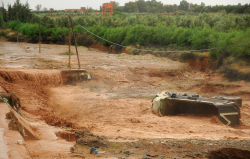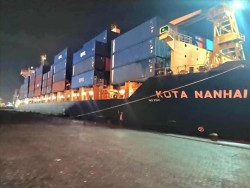Colombo Port City: A new Dubai or a Chinese enclave?
- 2022-01-17 02:55:05


 Pierre Rayer: Art, Science, and Happiness: The Universal Mission of Transmission to Future Generations through Patronage at the Louvre Abu Dhabi
Pierre Rayer: Art, Science, and Happiness: The Universal Mission of Transmission to Future Generations through Patronage at the Louvre Abu Dhabi Ahly crowned Super champions after dramatic extra-time win over Modern Future FC
Ahly crowned Super champions after dramatic extra-time win over Modern Future FC Yemeni Honey..A Development Wealth Threatened By Conflict And Climate Change
Yemeni Honey..A Development Wealth Threatened By Conflict And Climate Change California wildfires: Millions warned of possible power cut
California wildfires: Millions warned of possible power cut Central African rebels launch attacks near capital
Central African rebels launch attacks near capital Yemen’s STC Launches Military Operations to Pursue Al-Qaeda in Abyan
Yemen’s STC Launches Military Operations to Pursue Al-Qaeda in Abyan Hero bystander who tackled Bondi gunman praised by Trump, Ackman
Hero bystander who tackled Bondi gunman praised by Trump, Ackman Flash floods kill at least 21 people in Morocco's Safi
Flash floods kill at least 21 people in Morocco's Safi UAE opens Emirates Medical Centre in Khan Younis
UAE opens Emirates Medical Centre in Khan Younis Yemen : Vessel “Kota Nanhai” Departs Al-Mualla Container Terminal
Yemen : Vessel “Kota Nanhai” Departs Al-Mualla Container Terminal
